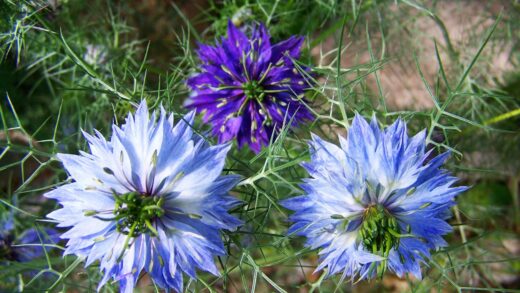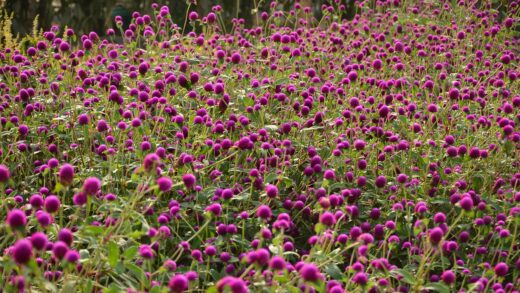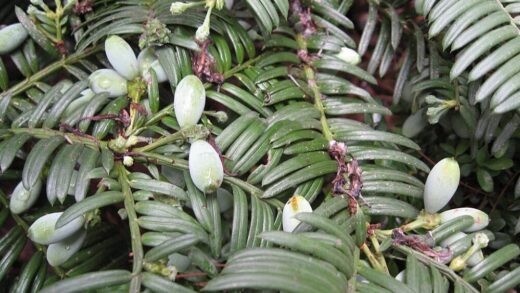To achieve the spectacular display of large, vibrant flower heads for which the African lily is renowned, a comprehensive understanding of its nutrient requirements and a disciplined fertilization strategy are essential. These plants are vigorous growers and heavy feeders during their active season, rapidly depleting the nutrients available in the soil to fuel the production of their lush foliage and towering flower scapes. Providing the right balance of essential macronutrients and micronutrients at the appropriate times in the growth cycle is the key to unlocking their full ornamental potential. An effective feeding regimen supports not only the current season’s blooms but also the plant’s long-term health and ability to store energy for future growth.
The fertilization needs of the African lily are closely tied to its annual growth cycle. The demand for nutrients begins in the spring as the plant emerges from dormancy and initiates new leaf growth. This early-season feeding is crucial for developing a strong and healthy framework of foliage, which will photosynthesize and produce the energy required for flowering. As the season progresses into summer and the plant prepares to bloom, its nutritional needs shift towards elements that specifically support flower production.
A balanced approach to fertilization is critical. While nitrogen is important for leafy growth, an excess of it can lead to a lush, green plant with very few or no flowers. The key is to use a fertilizer that provides a well-rounded profile of nutrients but has a higher proportion of potassium (also known as potash). Potassium plays a vital role in promoting the development of strong stems and encouraging the initiation of flower buds, leading to a more profuse and vibrant floral display.
The method and frequency of application are just as important as the type of fertilizer used. Liquid fertilizers are often preferred for container-grown plants as they provide nutrients in a readily available form and allow for precise control over the dosage. Alternatively, slow-release granular fertilizers can be incorporated into the soil at the beginning of the season to provide a steady supply of nutrients over several months. Regardless of the method chosen, it is imperative to cease all fertilization by the end of summer to allow the plant to harden off and prepare for its winter dormancy.
Understanding essential nutrients
For the African lily to thrive, it requires a range of essential nutrients, which are broadly categorized as macronutrients and micronutrients. The primary macronutrients are nitrogen (N), phosphorus (P), and potassium (K), each playing a distinct and vital role. Nitrogen is the fundamental component for vegetative growth, responsible for the development of healthy, green leaves. A sufficient supply of nitrogen in the spring is essential for building the ‘factory’ of foliage that will power the plant through the season.
More articles on this topic
Phosphorus (P) is crucial for a variety of metabolic processes, but it is particularly important for the development of a strong and extensive root system. It also plays a key role in energy transfer within the plant and is involved in the processes of flowering and seed production. A healthy root system is the foundation of a healthy plant, enabling it to efficiently absorb water and other nutrients from the soil. Therefore, an adequate supply of phosphorus is essential, especially when the plant is establishing itself.
Potassium (K), often referred to as potash, is arguably the most critical nutrient for achieving a spectacular floral display on an African lily. This element is directly involved in regulating many of the plant’s internal processes, including water movement and enzyme activation. Crucially, it promotes the development of strong, sturdy flower stems that can support the large, heavy blooms and enhances the overall size, color, and longevity of the flowers. For this reason, a high-potassium fertilizer is the recommended choice during the pre-flowering and flowering periods.
Beyond the three primary macronutrients, the plant also requires a range of secondary macronutrients, such as calcium, magnesium, and sulfur, as well as various micronutrients like iron, manganese, and zinc. Although these are needed in much smaller quantities, a deficiency in any one of them can lead to poor growth, discolored foliage, and reduced vitality. Using a complete, balanced fertilizer that includes a full spectrum of these trace elements will ensure that all of the plant’s nutritional needs are met, preventing deficiencies and promoting optimal health.
Choosing the right fertilizer
Selecting the most appropriate fertilizer is a crucial step in meeting the specific nutritional needs of the African lily. The ideal choice is a balanced fertilizer that has a higher concentration of potassium (K) relative to nitrogen (N) and phosphorus (P). This is often referred to as a ‘high-potash’ or ‘bloom-booster’ formula. When looking at the N-P-K ratio on the fertilizer packaging, you should look for a formula where the last number (K) is equal to or greater than the first two numbers. A ratio such as 5-10-10 or 10-15-20 would be suitable.
More articles on this topic
Liquid fertilizers are an excellent option, particularly for plants grown in containers. They are mixed with water and applied during regular irrigation, providing an immediate and readily available source of nutrients that the plant can absorb quickly. This allows for a high degree of control over the feeding regimen, as the concentration and frequency can be easily adjusted based on the plant’s stage of growth and visual feedback. Using a liquid feed every two to four weeks throughout the growing season is a highly effective strategy.
Another effective option is the use of controlled-release or slow-release granular fertilizers. These products are designed to break down gradually over an extended period, providing a steady and consistent supply of nutrients to the plant. The granules can be mixed into the potting compost at the time of planting or sprinkled on the soil surface at the beginning of the spring. This method is convenient as it reduces the need for frequent applications, but it offers less control over nutrient release compared to liquid feeding.
Organic fertilizers can also be used with great success. Well-rotted compost and manure can be incorporated into the soil at planting time to improve its structure and provide a slow release of essential nutrients. During the growing season, organic liquid feeds derived from comfrey or seaweed can be applied. Seaweed-based fertilizers are particularly beneficial as they are rich in potassium and contain a wide array of trace elements that promote overall plant health and resilience.
The feeding schedule
A well-structured feeding schedule that aligns with the African lily’s growth cycle is essential for maximizing its performance. Fertilization should commence in the early spring as soon as new growth emerges from the crown. This initial feeding provides the necessary nutrients, particularly nitrogen, to support the development of a lush and healthy set of leaves. A balanced fertilizer can be used at this stage to ensure all-around nutrition for the establishing foliage.
As spring progresses into early summer and the plant has developed a good set of leaves, it is time to switch to a high-potassium fertilizer. This change in nutrition signals the plant to shift its energy from vegetative growth towards the production of flower buds and stalks. Applying a high-potash feed every two to three weeks from this point until the flowers begin to open will provide the specific nutrients needed to develop large, vibrant, and long-lasting blooms on strong, sturdy stems.
The peak feeding period coincides with the peak growing and flowering period, typically from late spring through mid-summer. It is during this time that the plant’s metabolic rate is at its highest and its demand for nutrients is most intense. Consistent application of fertilizer as per the product’s instructions is crucial to prevent nutrient deficiencies that could lead to smaller flowers, weaker stems, or a shorter blooming period. Always water the plant before applying a liquid fertilizer to avoid burning the roots.
It is critically important to cease all fertilization by the end of summer or as soon as the flowers begin to fade. Continuing to feed the plant into the autumn will encourage the production of soft, new growth that will not have time to harden off before the first frosts. This tender new foliage is extremely susceptible to cold damage and can compromise the plant’s ability to enter dormancy successfully. The plant needs this period of winding down to store energy in its rhizomes for the winter, and excess nutrients will interfere with this natural process.
Recognizing nutrient deficiencies
Observing the foliage of an African lily can provide valuable clues about its nutritional status, as deficiencies in specific nutrients often manifest as distinct visual symptoms. A general yellowing of the older, lower leaves is a classic sign of a nitrogen deficiency. Since nitrogen is a mobile nutrient within the plant, it will move it from older tissues to support new growth, causing the older leaves to turn pale green and then yellow. Stunted growth and weak-looking foliage are also common indicators.
A deficiency in phosphorus can be more difficult to diagnose. It may result in a general lack of vigor and stunted growth. In some cases, the leaves may take on a dull, dark green or even purplish hue. As phosphorus is essential for root development and flowering, a deficiency will often lead to a poor root system and a significant reduction in the quantity and quality of blooms, even if the foliage appears reasonably healthy.
Potassium deficiency directly impacts the plant’s flowering ability and overall resilience. Symptoms often appear on the edges of the older leaves, which may develop a yellow or brown ‘scorched’ look. The plant may produce weak or floppy flower stems that are unable to support the weight of the blooms. Furthermore, a lack of potassium can make the plant more susceptible to pests, diseases, and environmental stresses such as drought or cold.
A lack of micronutrients, such as iron or magnesium, can also cause specific symptoms. An iron deficiency typically causes chlorosis, which is the yellowing of the newest leaves while the veins remain green. A magnesium deficiency, on the other hand, often presents as yellowing between the veins on the older, lower leaves, sometimes with a distinctive V-shape or marbled pattern. Using a well-balanced fertilizer that contains a full suite of trace elements is the best way to prevent these issues and ensure the plant remains healthy and vibrant.


















